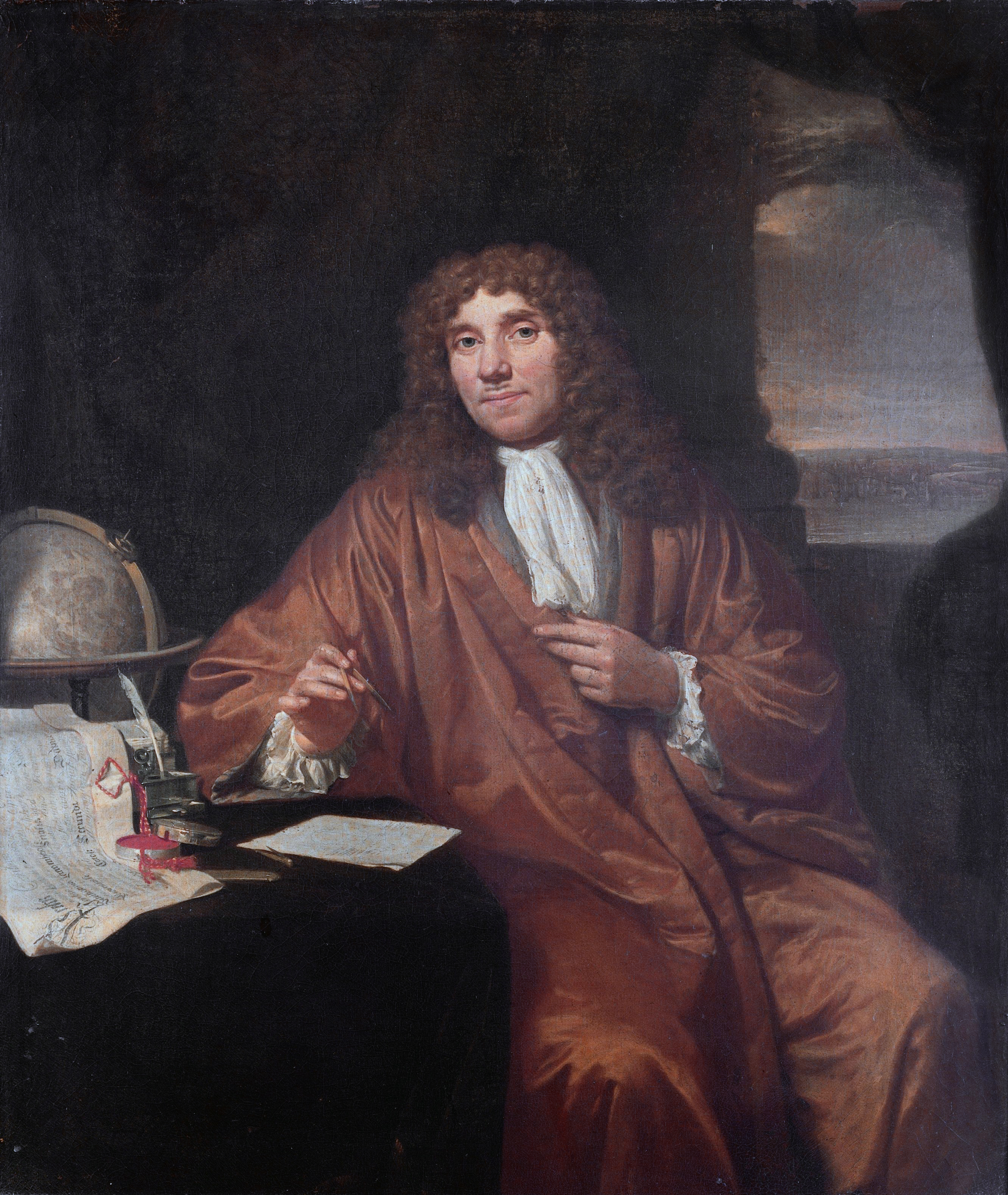When Antonie van Leeuwenhoek was born in Delft in the Netherlands, the baby seemed well enough: he cried, he reacted to his mother, he ate and grew. As little Antonie grew, his family came upon troubled times. Two of his sisters and his father died, and Antonie suffered a terrible fever that would blind him by his sixth birthday. The boy recovered, but he now faced a terrible handicap.
In 1640, Leeuwenhoek's mother remarried, and he was sent to a monastery in Germany that cared for the blind. While unable to read, Leeuwenhoek would be taught songs and oral passages from the Bible by the monks. He was considered the brightest of the children in the care of the monks, and they came to give him special privileges. Sometime when Leeuwenhoek was about sixteen, he was with a scribe who told him about the illuminations in the book he read to Leeuwenhoek and offered him to touch the gilt and thick medieval paints. Leeuwenhoek's later letters described the sensation of feeling images as almost as if he could see again with his mind's eye.
When he became sixteen, the monks encouraged Leeuwenhoek to pursue a trade beyond simple manual labor. He considered several options before becoming a draper, being able to measure by a grooved ruler he carved himself, having the monks check its accuracies for him. When his skills were approved, he moved home to Delft and secured an apprenticeship with a cloth merchant. While he worked, he considered his system of grooves and the illuminations, and, by 1653, he developed a method of “writing by texture.”
Leeuwenhoek worked in business until he had built enough capital to set himself up as a teacher. He did not know Latin, and he had never attended university, but his drive to develop a written alphabet for the blind pushed him. Over the course of months and perfected over years, he built a set of mirrored letters. His method of writing was to etch each backward to be used as a mold. He experimented with systems of carving wood and pouring wax, but the wax was prone to melt under the warmth and pressure of fingers. Lead proved too soft, and tin plates warped. Finally he settled upon glass, and the glass books he produced became the first written code for the blind.
Leeuwenhoek's school attracted the attention of parents of blind children among the growing middle class of the early Enlightenment, and he soon found himself with no shortage of students. His methods spread across Europe and were translated to match the alphabets of French, English, and German. Only two of his original glass books are known to survive due to breakage and the glass being worn down by generations of fingertips. In place of glass, Leeuwenhoek experimented later with typesetting machines into plates of alloys, adding mechanical engineering and metallurgy to his life's impressive list of feats.
His contributions to science are held among the greatest of the Enlightened Age. Along with the creation of calculus, natural law, and principles of physics. It would not be until the Industrial Revolution that discoveries in biology and anatomy would catch up with the science of microbiology founded in part by Charles Darwin, whose theory of the sexual reproduction of microorganisms would cause scandal among the Victorian world, though later contribute to Sir Alexander Fleming's germ theory.
–
In reality, Leeuwenhoek was healthy. He became the apprentice of a cloth merchant and eventually set himself up as a draper, where he saw a magnifying glass with a 3x power. Inspired, Leeuwenhoek would develop more and more powerful microscopes over his lifetime, building over 250 of them and grinding 500 lenses. Considered an amateur by the scientific elite, his discoveries with microscopes capable of 275-500x magnification included: bacteria (called “animacules”), protists, spermatozoa, and great expansions on the work of Robert Hooke.

we reverse the premise of this article in October 24, 1638 - Christian Science un-blinded by Leeuwenhoek's vision on Today In Alternate History.
ReplyDelete